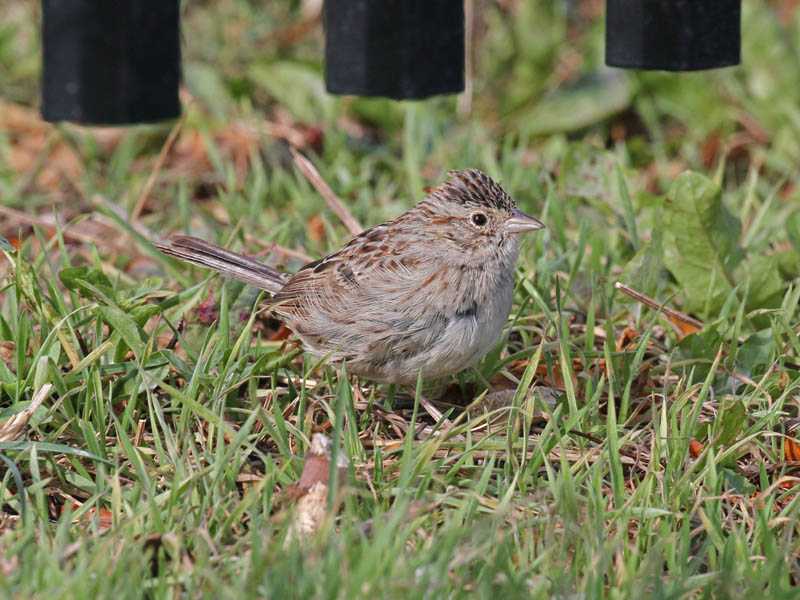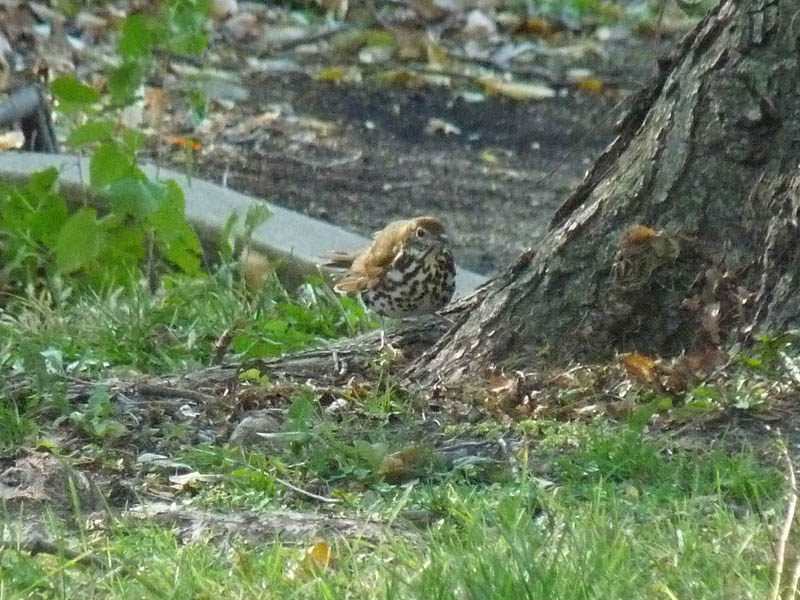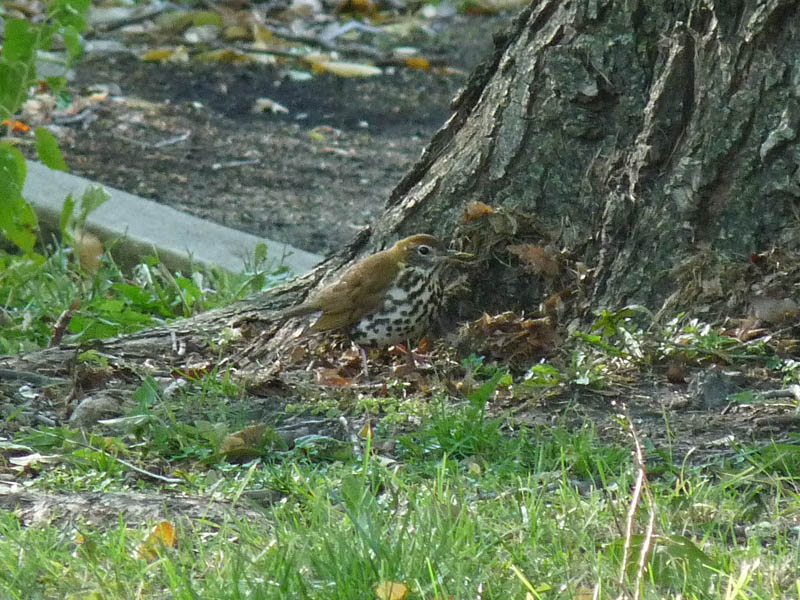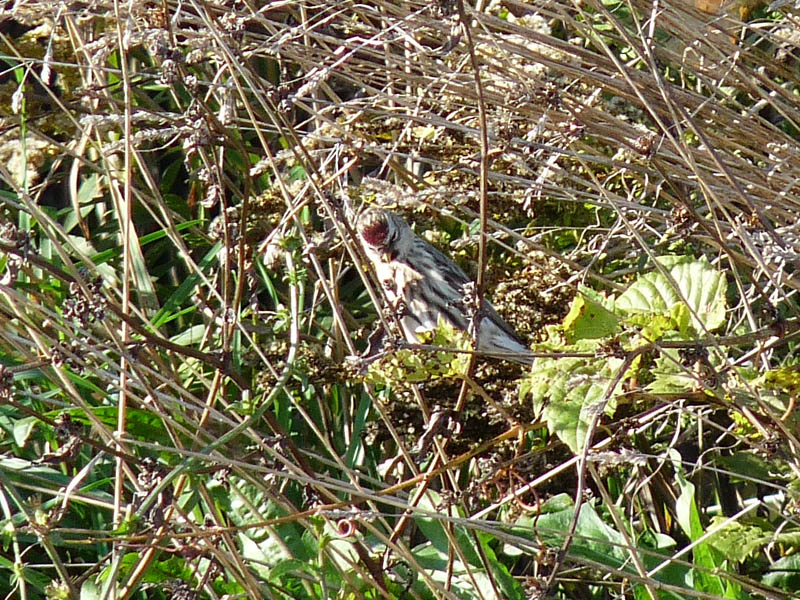The eBird database will be unavailable from 8:00 a.m. Eastern Time on November 17 until 8:00 a.m. Eastern Time on November 19. You won’t be able to enter your sightings or view checklists using the ebird.org website. You can still enter your sightings with the eBird Mobile app and submit them when eBird is back up. This article from Cornell has more information – Cornell Lab Scheduled Database Maintenance.
Author Archives: rhughes
MEGA! Cassin’s Sparrow, November 13, 2020
November is one of the most exciting months for birders. We look forward to it with the same sense of anticipation and excitement as we do for May, and with good reason. The annals of Illinois ornithology are filled with November rarities and vagrants.
On the morning of November 13 I was walking the outside of the boat storage lot at Montrose as I have been since a Harris’s Sparrow showed up there in October. I never birded it much in the past and usually just walked by it on my way to the rest of the Point. I didn’t see the October Harris’s Sparrow but I was finding other sparrows, so I had enough incentive to keep checking. At about 8:30 a.m. I kicked up a small bird near a spruce tree on the northeast side of the lot. I thought at first it was a wren but the thick bill ruled out a wren and ruled in a sparrow. The bird was plain to the point of being non-descript and had a long tail. Several possibilities came to mind. I suspected Cassin’s Sparrow based on probability, and when I saw the flank streaking I knew that’s what it was. The bird was decidedly uncooperative for me and played a frustrating game of hide and seek that made seeing plumage details almost impossible. Others had better luck viewing it after I left. Close-up photos show diagnostic field marks for this species that weren’t apparent in the field, including white tips to the outer tail feathers and horizontal barring on the tail. This is the first Cassin’s Sparrow for Montrose, number 347.
Cassin’s Sparrow is a bird of the American Southwest, but they do wander and occur far out of their normal range. eBird has records for the East Coast, New England, and the Canadian Maritimes. Illinois has three previous records, all within the last 40 years. It is a species if not to be expected than to at least consider seriously as a possibility.
To see a list of the birds that have been recorded at Montrose, refer to the Birds Recorded at Montrose Point in Chicago page.
Previous Illinois Cassin’s Sparrow Records
- May 27 – June 6, 1983, Chicago, Cook County
- May 3 – 6, 2011, Winthrop Harbor, Lake County
- September 8, 2014, Chicago, Cook County
2020 Winter Finches
Winter Finch – A collective term that refers to Arctic, subarctic, and boreal forest breeding members of the family Fringillidae. This includes redpolls, Pine Siskin, crossbills, Pine and Evening Grosbeaks, and Purple Finch.
This continues to be an excellent fall for winter finches in the Midwest. Common Redpolls, Pine Siskins, and Purple Finches are being seen almost daily at Montrose. Even more exciting were reports of two of the rarer winter finches. On November 3, I found 10 White-winged Crossbills in a spruce tree near the Park Bait Shop (at the corner of W. Montrose Avenue and W. Montrose Harbor Drive), and several observers saw an Evening Grosbeak on November 5. According to eBird, the last White-winged Crossbills from Montrose were in 2012. The last Evening Grosbeak record was about 20 years ago. The rest of the fall should see more of these birds. The Montrose Map page has an interactive map that shows the road system at Montrose.
How to Look for Winter Finches at Montrose
There are a couple of ways to look for winter finches at Montrose. We don’t have a lot of finch habitat but we have some. The pine and spruce trees south of the main entrance of the Sanctuary on W. Montrose Harbor Drive have cones that could attract crossbills. The hawthorns on the service road to the beach house are laden with berries. We’ve been seeing Purple Finches in these hawthorns and they could attract Pine and Evening Grosbeaks. The pine and spruce trees next to the Park Bait Shop don’t have many cones but could attract crossbills and are easy check. Redpolls like weedy areas such as the native planting areas at the south and east end of the Point and north of the Marovitz Golf Course.
The Joy of Surprise
One of the most endearing qualities of looking for birds is an element of surprise – the potential to see something unusual, unexpected, or even extraordinary. This element of surprise doesn’t just apply to finding a rare bird. Finding a common bird in an unusual circumstance can be exciting too. Case in point, the Wood Thrush I saw at Montrose on October 31, 2020. Wood Thrushes are common in the eastern United States; we see them every spring as migrants at Montrose, and they breed throughout Illinois in appropriate habitat. By the end of October however they should be on their wintering grounds in Central America or well on their way there, so imagine my surprise when I first laid eyes on this bird. To borrow and modify something Forrest Gump said, birding is like a box of chocolates – you never know what you’re going to get.
Surf Scoter, Iceland Gull, and Wood Thrush, October 31, 2020
I didn’t have great expectations for October 31. The forecast called for south winds and south winds in late October never produce many birds at Montrose. Despite the unfavorable weather conditions, I was pleasantly surprised by what I did see. A couple of dead salmon washed up on Montrose Beach that attracted the attention of some Herring Gulls, which attracted the attention of a juvenile Iceland Gull. This was my first Iceland Gull of the season. Another birder alerted me to a scoter on Lake Michigan off the beach that turned out to be a Surf Scoter, another first of the season. The biggest surprise was a late Wood Thrush, the latest Wood Thrush I’ve had at Montrose, and probably anywhere else. Rounding out the list were four Common Redpolls and a couple of Snow Buntings. I tallied 37 species in three hours of birding. My eBird checklist for the morning has photos of the Iceland Gull and Surf Scoter. Follow the URL below to see it.
eBird Checklist
October 31, 2020
Common Redpolls, October 30, 2020. And so it begins.
Two Common Redpolls were at Montrose on October 30. These were the first of hopefully what will be many more this season. Both were feeding in weeds on the side of the path between the Golf Course Pond and harbor. This is forecast to be an excellent fall and winter for finches. We’ve already had record numbers of Pine Siskins and good numbers of Purple Finches. To see redpolls at Montrose, check any weedy area, such as the native planting areas at the east end of the Point or north of the Golf Course. Link to my eBird checklist for the day below.
eBird Checklist
October 30, 2020





